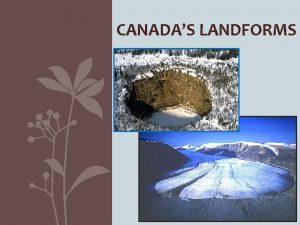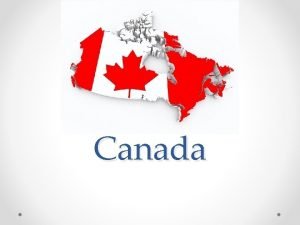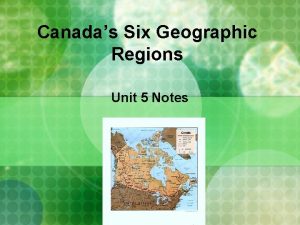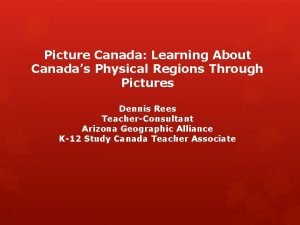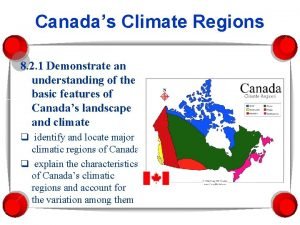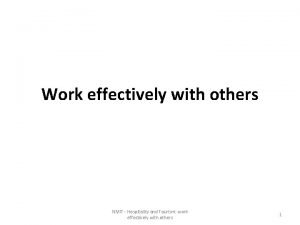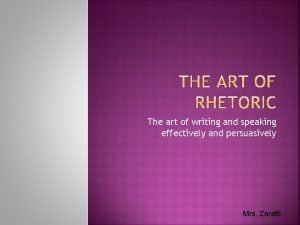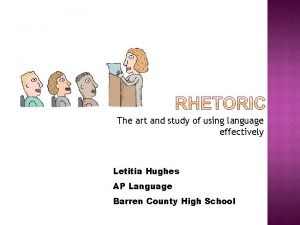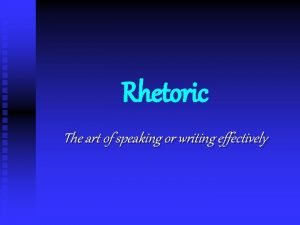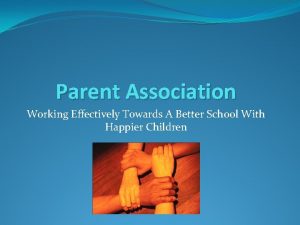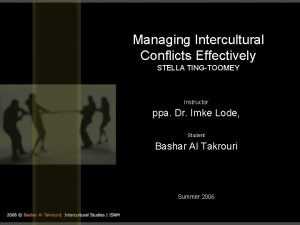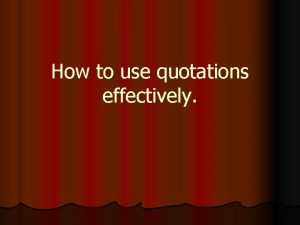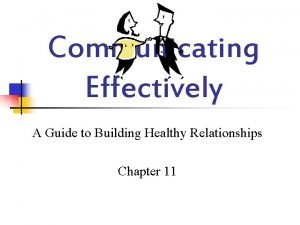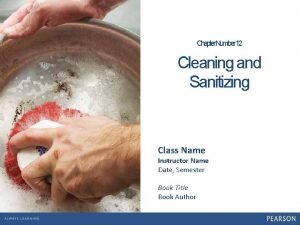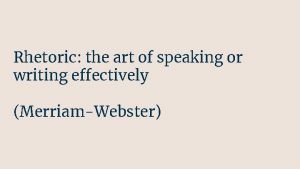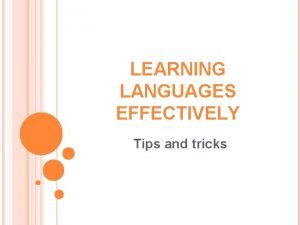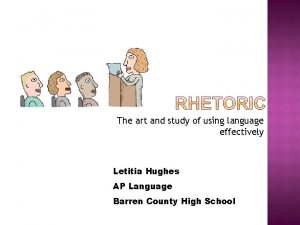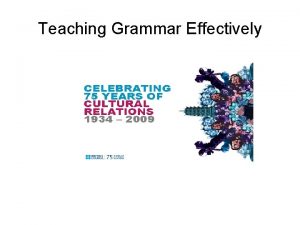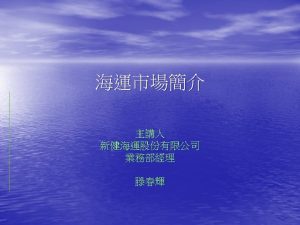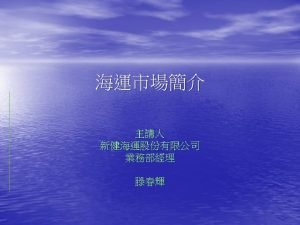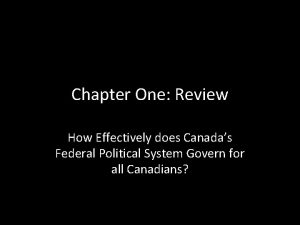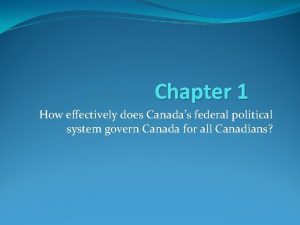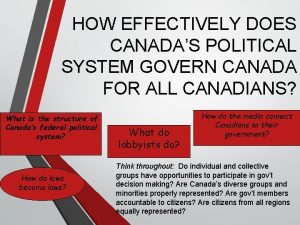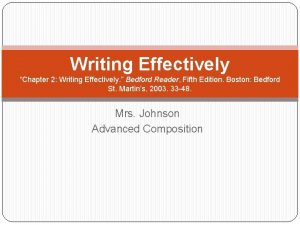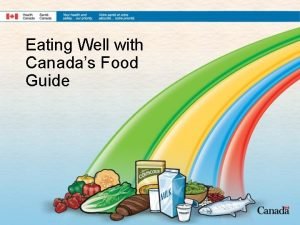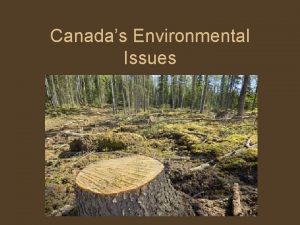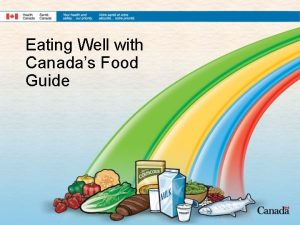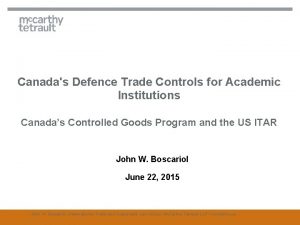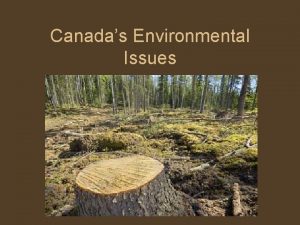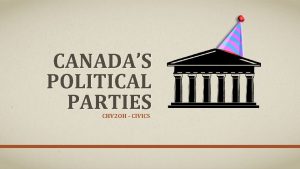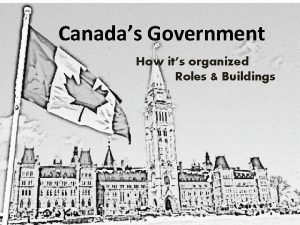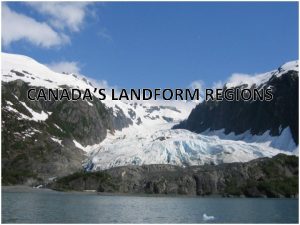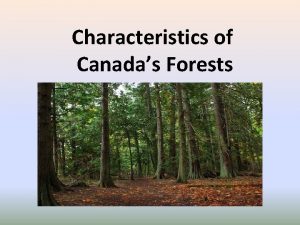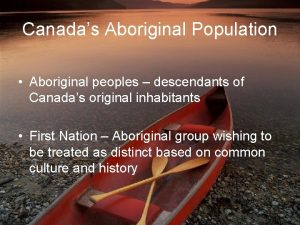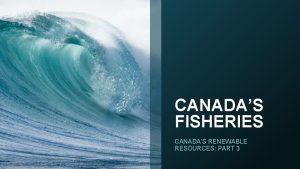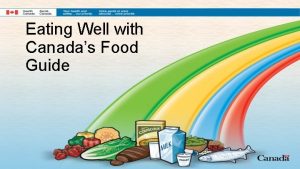Chapter 3 How effectively does Canadas Charter of






























- Slides: 30

Chapter 3 How effectively does Canada’s Charter of Rights and Freedoms protect your individual rights?

Focus Questions ► How does the Charter protect individual rights and freedoms? ► How does the Charter affect law making in Canada? ► How does the Charter affect the workplace?

Chapter Opener Page 88 “I have my rights! This is a free country!” Have you ever heard anyone say something like that? When people talk about rights and freedoms, they’re really talking about governance: the rules that describe what government can do with its power. They’re saying that government power can only go so far — up to the point where it limits the choices you or any individual can make. If government power goes beyond that point, there has to be a reason, based on the values we hold as a society. In Canada, the rights and freedoms of individuals are stated in the Charter of Rights and Freedoms.

“What is the difference between a right and a freedom? “

Glossary Terms Rights: Refers to the things that we deserve as human beings (e. g. the right to clean water, food, shelter, reasonable access to healthcare) Legal Rights: Are more specific, and refer to rights secured by law. Which cannot be denied from one situation to the next. In Canada, all citizens have a legal duty to respect the legal rights of others. If citizens feel their rights are being violated, they can turn to the law to ensure their rights are respected. Example: We have the legal right to free speech under the Charter of Rights and Freedoms.

Glossary Terms Add the following terms into your glossary sheets. Freedoms: A freedom implies that no one will interfere with what you want to do. No one is obligated to ensure that your freedoms are not being violated. The government has the responsibility to ensure that legal rights do not unjustifiably limit your freedoms. Example: We have the right of free speech, but you do not have the freedom to exercise that right in all instances. You do not have the freedom to yell “bomb” on an airplane or “fire” in a movie theater just for fun to see people’s reaction. This is because this type of speech violates other people rights to safety and security.

Glossary Terms Add the following terms into your glossary sheets Constitution: A special set of laws that establish a framework of governance. Example: Canada’s constitution is made up of the Charter of Rights and freedom which is granted to all Canadians. Charter of Rights and Freedoms: Document entrenched in the Constitutional Act, 1982 that lists and describes the fundamental rights and freedoms that is guaranteed to Canadians. Example: It includes Fundamental freedoms, Democratic Rights, Mobility Rights, Legal Rights, and Equality Rights.

What is the Charter of Rights and Freedoms? #7 According to the quote from Jean Chretien on page 96, “Why is it important to enshrine the Charter in the Constitution? Do you agree or disagree with this statement? ” In 1982, the Charter of Rights and Freedoms was made a part of Canada’s new Constitution so that it can be changed only with great difficulty. Any proposed change must receive approval of the Senate, the House of Commons, and two thirds of the provinces representing fifty percent of the Canadian population.

Individual Rights Under the Charter Fundamental Freedoms: Freedom to… § Express your opinions § To choose your own religion § To organize peaceful meetings and demonstrations § To associate with any person or group

Fundamental Freedoms ► Fill in the notes while watching the movie (notes found in workbook) ► https: //www. youtu be. com/watch? v=7 OEOSImz 5 po

Individual Rights Under the Charter Democratic Rights: The Right to… § Vote for members of the House of Commons and of provincial legislatures. § Vote for a new government at least every five years.

Individual Rights Under the Charter Mobility Rights: The Right to… § Move anywhere within Canada and to earn a living there. § Enter, stay in, or leave Canada.

Individual Rights Under the Charter Legal Rights: The Right to… § Be free of imprisonment, search and seizure without reasons backed by law and evidence. § A fair and quick public trial by an impartial court that assumes that you are innocent until proven guilty.

Individual Rights Under the Charter Equality Rights: The Right to… § Be free of discrimination because of race, national or ethnic origin, religion, gender, age, or mental or physical disability.

What is the Canadian Charter of Rights and Freedoms? ► AKA § The Charter of Rights and Freedoms § The Charter (1982) Is a “Bill of Rights” – a list of the most important freedoms and rights. The list is made into law. It includes both INDIVIDUAL and COLLECTIVE rights ► ► Canada had a “Bill of Rights” made into law in 1960. It was a federal statute and was amendable by parliament, and had no application to provincial law.

What is the Charter of Rights and Freedoms? ► With the Charter, Canadians can challenge in court laws that restrict their rights. ► The Judicial Branch (supreme court) makes decisions about these challenges – and can strike down laws that restrict rights in unjustified ways. ► The Charter says that Canada’s government is justified in restricting rights if the restrictions are necessary to maintain Canada as a free and democratic society.

Crossing the Line ► Read the cartoon “Crossing the Line” on page 93 as a class. Then respond to the following question. 1. “To what extent should individual rights and freedoms be protected in society? ” 2. “Which speaker do you agree with most? Why? ” 3. “What Charter of Rights clause did this situation violate? ”


What does the Charter reflect about today’s society compared to the past? In groups you are going to be given a case study about how the Canadian government treated certain groups of people in our past. AFTER READING THE CASE STUDY CONSIDER THESE QUESTIONS… 1. 2. 3. v How were this groups rights were violated? Can this situation happen in Canada today? To What extent is this still going on today? How does the Charter protects this groups rights today? COMPLETE THE WORKSHEETS PROVIDED BY YOUR TEACHER AFTER READING YOUR CASE STUDY. EVERY ONE IN YOUR GROUP NEEDS TO BE PREPARED TO DISCUSS YOUR CASE STUDY WITH THE CLASS.

Class Cause and Effect Chart Cause Effect Indian Act Cause Effect

Japanese Internment Video Watch the following videos on CBC News in Review about Japanese Internment. The brief video clips or radio clips examine how the Canadian government dealt with the Japanese during WWII and how the government later compensated Japanese Canadians for how they were treated. ► http: //archives. cbc. ca/war_conflict/second_world_ war/topics/568/

How does the Charter affect law making in Canada? ► As a class we are going to read 4 case studies about how a violation of individual rights can lead to a change in Canada’s laws. Breaking the Communication Barrier (p. 105) 2. Always Open 24 -7 (p. 106) 3. Restrictions on Flying (p. 107) 4. Banning Junk Food (p. 109) 1.

Post Case Study Reflection Questions 1. 2. 3. 4. 5. 6. 7. 8. In each case who did the law benefit? In each case who did the law negatively impact? How could each case affect your personal quality of life? Should the law have been changed? To what extent does the law impact different groups in society? What Charter issue did each case violate? What implications does passing the law have for the future? To what extent did the passing of the law further violate someone’s Charter rights?

How does the Charter affect the Workplace? ► labour union: an organization of workers that acts to protect workers’ rights and interests ► Gender Equality and Pay Equity § Read page 113 ► Equality and Ageism § Read page 115

What part of the Charter does this refer to?

What part of the Charter does this refer to?

What part of the Charter does this refer to?

What part of the Charter does this refer to?

What part of the Charter does this refer to?

What part of the Charter does this refer to?
 Charterbare
Charterbare Temperatura cima teide
Temperatura cima teide Canadas landforms
Canadas landforms 90 of the canadian population lives within
90 of the canadian population lives within Whats canadas longest river
Whats canadas longest river Unit 5 food national geographic
Unit 5 food national geographic Canadas head of state
Canadas head of state What economic system is canada
What economic system is canada Rafael artacho cañadas
Rafael artacho cañadas Canadas physical regions
Canadas physical regions Canadas climate
Canadas climate Voicemail message personal
Voicemail message personal Summary of the poem london by william blake
Summary of the poem london by william blake Working effectively with others
Working effectively with others How to effectively use twitter
How to effectively use twitter What is the
What is the The art of using language effectively and persuasively
The art of using language effectively and persuasively The art of speaking or writing effectively is called
The art of speaking or writing effectively is called Working effectively as a parent association
Working effectively as a parent association Managing intercultural conflict effectively
Managing intercultural conflict effectively Quotation burger
Quotation burger Effective communication in the digital age
Effective communication in the digital age Meaning of effective communication
Meaning of effective communication Healthy relationships communicating effectively
Healthy relationships communicating effectively What will general-purpose detergents effectively remove?
What will general-purpose detergents effectively remove? Effective communication
Effective communication The art of speaking or writing effectively.
The art of speaking or writing effectively. How to learn languages effectively
How to learn languages effectively The art of the effective use of language
The art of the effective use of language Grammar feedback examples
Grammar feedback examples Assessing grammar effectively
Assessing grammar effectively


